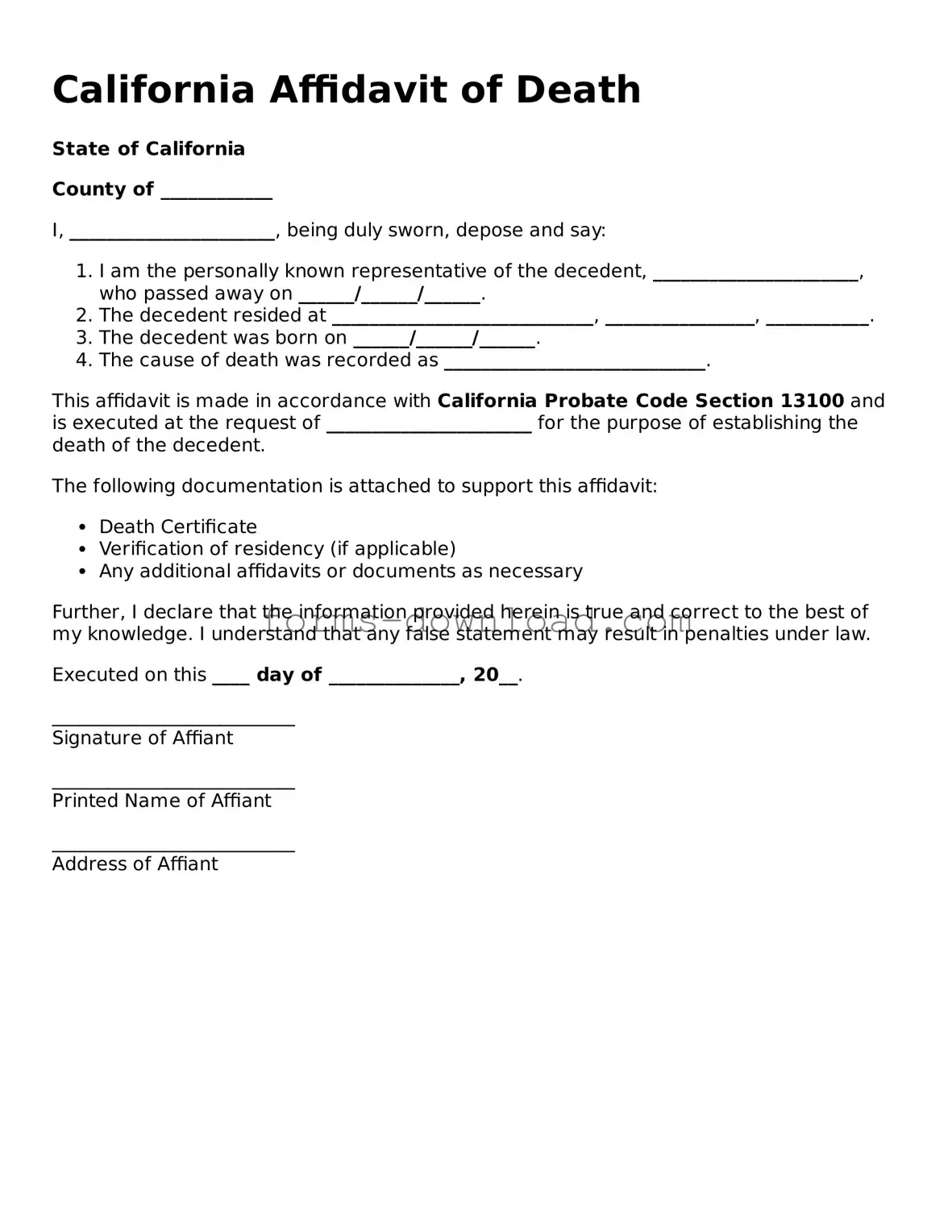California Affidavit of Death
State of California
County of ____________
I, ______________________, being duly sworn, depose and say:
- I am the personally known representative of the decedent, ______________________, who passed away on ______/______/______.
- The decedent resided at ____________________________, ________________, ___________.
- The decedent was born on ______/______/______.
- The cause of death was recorded as ____________________________.
This affidavit is made in accordance with California Probate Code Section 13100 and is executed at the request of ______________________ for the purpose of establishing the death of the decedent.
The following documentation is attached to support this affidavit:
- Death Certificate
- Verification of residency (if applicable)
- Any additional affidavits or documents as necessary
Further, I declare that the information provided herein is true and correct to the best of my knowledge. I understand that any false statement may result in penalties under law.
Executed on this ____ day of ______________, 20__.
__________________________
Signature of Affiant
__________________________
Printed Name of Affiant
__________________________
Address of Affiant
